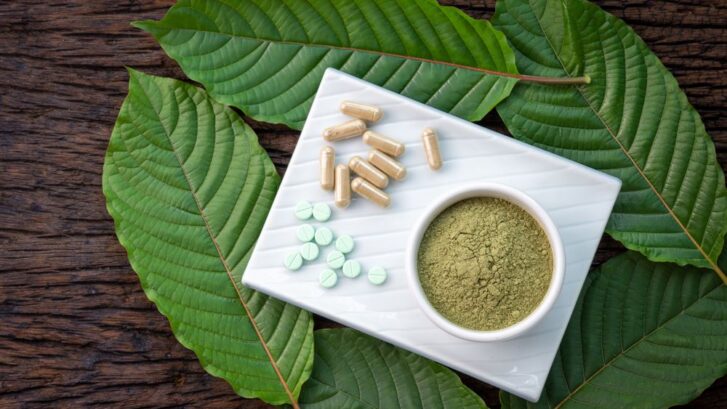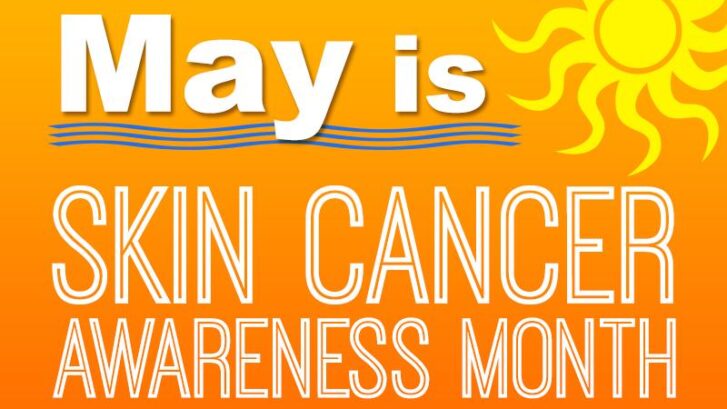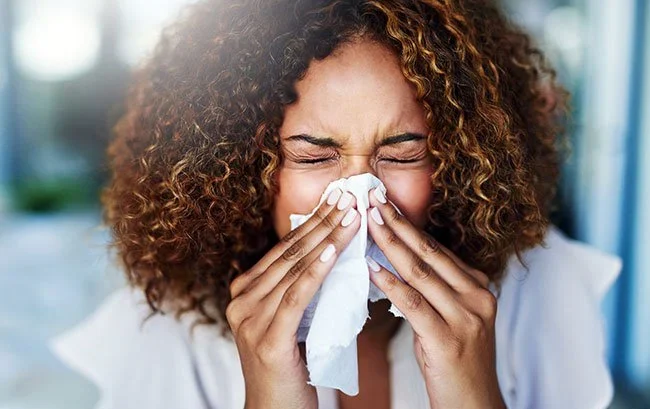Don’t Take Your Eyes Off Kids Around Water
Now that summer’s here and school is out, we’ll be spending more time at the beach and around the pool with our kids.

Now that summer’s here and school is out, we’ll be spending more time at the beach and around the pool with our kids.

Our concierge primary care doctors in Jupiter know that many of our patients are interested in over-the-counter (OTC) alternative treatments for their ailments.
One of the more popular of these is kratom, an herb that has been used for centuries in Asian countries as a way to reduce fatigue and ease various aches and pains. In this country, it is sold in drinks or as supplements and is said to treat such common conditions as anxiety, depression, and opioid withdrawal.
One report estimated that as many as 16 million Americans also use kratom for pain relief in such chronic diseases as lupus, multiple sclerosis, fibromyalgia, rheumatoid arthritis, and other similar conditions.
Testimonials from users include such claims as, “Kratom gave me my life back after being addicted to pain pills;” “It has helped me enormously with chronic back pain;” and, “It got me off a 20-plus-year addiction to narcotics and opioids.”
On the other side are statements like these from a former user who told The Washington Post that “kratom was fun—it was like having morphine and cocaine at the same time”—until he got addicted. Withdrawal, he reported, was like “getting ripped apart by fishhooks.”
Various agencies including the U.S. Food and Drug Administration (FDA), the World Health Organization (WHO), and even the U.S. Drug Enforcement Agency (DEA) have spent the last several years trying to ban it. Six states have already done so, with several others considering it. It is still legal in Florida, but may be banned or controlled in some localities here.
In April, the FDA released a statement warning consumers not to use the herb, Mitragyna speciosa, commonly known as kratom:
“FDA is concerned that kratom, which affects the same opioid brain receptors as morphine, appears to have properties that expose users to the risks of addiction, abuse, and dependence.”
FDA
Opponents have been buoyed in their arguments by several studies linking kratom to serious side effects.
One such study in 2019 reported that the number of phone calls to U.S. poison control centers regarding adverse effects from kratom have soared, from 13 calls in 2011 to 682 in 2017. Reported effects of kratom overdose included rapid heartbeat, agitation, high blood pressure, seizures, coma, kidney failure, and 11 deaths during the study period. Two of those deaths were attributed to kratom alone, while the other nine occurred in people who combined kratom with other drugs.
Another study on kratom use disorder (KUD) by the National Institute on Drug Abuse (NIDA), published in the Journal of Addiction Medicine in March, found that over half of 129 past and current kratom users showed no signs of addiction. But 29.5 percent met the diagnostic criteria for KUD, which includes increased use, tolerance, withdrawal, unsuccessful attempts to quit, and cravings.
Proponents attribute these adverse reports to a profit motive on the part of drug companies, overly restrictive U.S. drug policies, and poor research. They say it has been used successfully for thousands of years in Southeast Asia without a problem.
Advocates also maintain that, in these times of widespread and deadly opioid addiction, kratom is an acceptable alternative and that its dangers have been wildly overblown.
In a recent editorial published in the Scientific American, Maia Szalavitz, an author and journalist who focuses on science, public policy, and addiction treatment, writes that kratom “does appear to be far safer than all illegal and most prescription opioids.” She referred to a Centers for Disease Control and Prevention (CDC) study in 2016 and 2017 of some 27,000 kratom-related overdoses. Of those, kratom was implicated in less than one percent of overdose deaths.
“Moreover, in nearly all overdose deaths associated with kratom, it was accompanied by stronger drugs that kill more often, so it is not clear that it actually played a major role or even any at all,” she wrote.
“For example, around two-thirds of the 152 deaths the CDC studied also involved illicit fentanyl and its analogues, which are thousands of times more potent. In only seven cases was kratom the only only substance identified—and even here, researchers cannot rule out the possibility of undetected drugs,” she added.
Nevertheless, most medical experts warn that kratom use can have adverse consequences. According to the Cleveland Clinic, “kratom’s potential for serious side effects outweigh its potential benefits.”
It lists the following most common side effects of kratom:
More serious side effects can include:
In addition, people going through kratom withdrawal may experience:
While proponents hope more research will eventually vindicate kratom as a useful supplement, the medical community generally holds that its side effects more than outweigh any potential benefits. It can be especially dangerous when combined with other legal and illegal drugs.
While it’s up to you, we would suggest that our patients not take the risk of using this substance. If you’re thinking of using kratom for any reason, please discuss it with us first. We may be able to help you find other safer treatment options.

Because May is Skin Cancer Awareness Month, our primary care doctors in Jupiter want to remind you of the dangers of sun exposure and remind you of the best way to avoid it.
It’s important to know the facts about skin cancer and the sun, along with exposure to tanning beds, because the National Cancer Institute (NCI) estimates that this year 99,780 people in the U.S. will be diagnosed with melanomas of the skin, and that 7,650 people will die from this most deadly form of cancer.
But a proper use of an effective sunscreen can prevent most skin cancers.

From the time we’re little kids, any mention of bowel habits can trigger giggling embarrassment. We’re not sure why that is, because the intestine is simply another organ in the body. Nevertheless, our concierge primary care doctors in Jupiter know that talking about bowel disorders can be uncomfortable for our patients.

If you think your allergies have been getting worse over the last few years, you’re not imagining it.

There are so many reasons we love our pets: companionship, loyalty, entertainment, and unconditional love. It’s estimated that at least 68 percent of American homes have at least one pet.

As we’ve just passed the second-year anniversary of the SARS-CoV-2 pandemic, our concierge primary care doctors in Jupiter think we should take a moment to reflect on how far we’ve come in dealing with this often-deadly disease.
It may not seem like it, because we still have to wear masks many places and haven’t fully returned to pre-pandemic life, but we have made progress.
For instance, we know more about how it spreads (through the air, especially in enclosed spaces), and how to protect ourselves (safe, effective vaccines and high-quality masks). And even though we’re still in the grip of of this still-relatively new coronavirus, and we’ve also found effective ways to treat it (monoclonal antibodies and anti-viral drugs).
And, believe it or not, the omicron variant of the virus may have turned out to be relatively good news, even though over 2,000 Americans a day are still dying from it.
But because it appears less lethal than its predecessors, omicron may make the pandemic more manageable.
The Centers for Disease Control and Prevention (CDC) released the results of a study late last month showing that the omicron variant—which is now the dominant variant both here in the U.S. and around the world—causes less severe illness, fewer hospitalizations, and requires less time in isolation following exposure.
This is partly due to the large numbers of people who have been vaccinated and/or infected with COVID-19, as well as to the fact that the virus appears to concentrate its effects in the upper airways instead of settling deep in the lungs.
The downside is that omicron is far more transmissible than earlier variants or the original virus. This is why so many people are catching it, and why—due to the sheer numbers of infections— hospitals are still being overwhelmed and an average of 2,200 people a day are still dying from the coronavirus.
But an NBC News analysis of COVID-19 case numbers at the end of January showed that Florida is one of the many states where omicron is no longer surging.
And chief White House medical advisor Anthony Fauci said in an interview with ABC’s “This Week” that he expects the wave to subside in “most” states by the end of February.”
“As we get into February . . . it is very likely that most of the states in the country will have turned around with their peak and are starting to come down with regard to cases and then obviously hospitalizations,” he said.
While cautioning that “our work is not done,” Hans Kluge, regional director of the World Health Organization (WHO) for Europe, released a statement two weeks ago that offered a glimmer of hope to a pandemic-weary world.
“The pandemic is far from over, but I am hopeful we can end the emergency phase in 2022 and address other health threats that urgently require our attention,” he said in a statement.
“This pandemic, like all other pandemics before it, will end, but it is far too early to relax,” he added.
One recent setback in the fight against SARS-CoV-2 was the finding from the CDC, confirmed by the drugs’ manufacturers, that two of the most common monoclonal antibodies used to keep at-risk individuals out of the hospital do not work against the omicron variant.
But again, there’s good news on that front, as well, because one monoclonal antibody—sotrovimab—is effective, and is still available at most hospitals even though Florida’s outpatient centers have closed.
Those who have mild to moderate symptoms of COVID-19 (fatigue, cough, loss of smell or taste, fever) or have underlying risk factors (those over 65, diabetes, obesity, kidney, heart, or lung disease or those who are immunocompromised) can check with area hospitals to see whether they’re offering this treatment.
In addition, other effective weapons in the arsenal against COVID-19 include the intravenous antiviral treatment remdesivir and the newly authorized oral antiviral drugs, Paxlovid or molnupiravir.
Two years in, we still don’t have all the answers, and until more people in this country and around the world are fully vaccinated, SARS-CoV-2 will not be fully manageable.
Each person who remains unvaccinated not only puts themselves at risk, but others around them, as well. And each infection offers the virus another chance to mutate.
Speaking of mutations, you may have heard of another new mutation of the omicron virus that some are calling “son of omicron” or “stealth omicron” because it’s so difficult to detect in PCR tests.
The new variant, designated BA.2 (omicron is BA.1), was first reported in California in November. It has since been seen in isolated cases in Texas as well as other countries. However, while remaining cautious, at this point most virologists don’t think it’s more dangerous or more transmissible than omicron BA.1. We’ll let you know if we learn otherwise.

Insomnia is the most common sleep disorder. But our primary care doctors at MD 2.0 in Jupiter find our patients often don’t let us know when they’re having trouble sleeping. They either decide it’s not a big deal or they think the only remedy we can offer is sleeping pills.
While you might need to use medication in the short term, advances are made every day in the treatment of this potentially harmful condition.

It’s easy to make healthy resolutions for the New Year. We’re almost compelled to, because the flip of the calendar offers the promise of wiping the slate clean and starting a whole new life for ourselves.
But often, our best intentions fall by the wayside by the end of January. So our concierge primary care doctors in Jupiter would like to suggest a few healthy resolutions you can make that will be easy to stick to but can still make a significant difference in your health in the coming year.

Due in part to the pandemic, sales of plant-based foods have soared recently. One survey reported 77 percent of U.S. shoppers bought at least one type of plant-based food in the last six months. Of those, 30 percent said this was a direct result of the COVID-19 pandemic.
Some respondents said they wanted to make a conscious effort to eat healthier to improve their immune systems. Others said it was because they had more time at home to experiment with new food choices.
Our primary care doctors at MD 2.0 in Jupiter certainly applaud this trend. At the same time, we noticed one of the main drivers of plant-based food sales is the meatless burger. You can now find it on grocery store shelves and many restaurants.
So are plant-based burgers healthier than their meat-based inspiration? The answer seems to be, not necessarily.